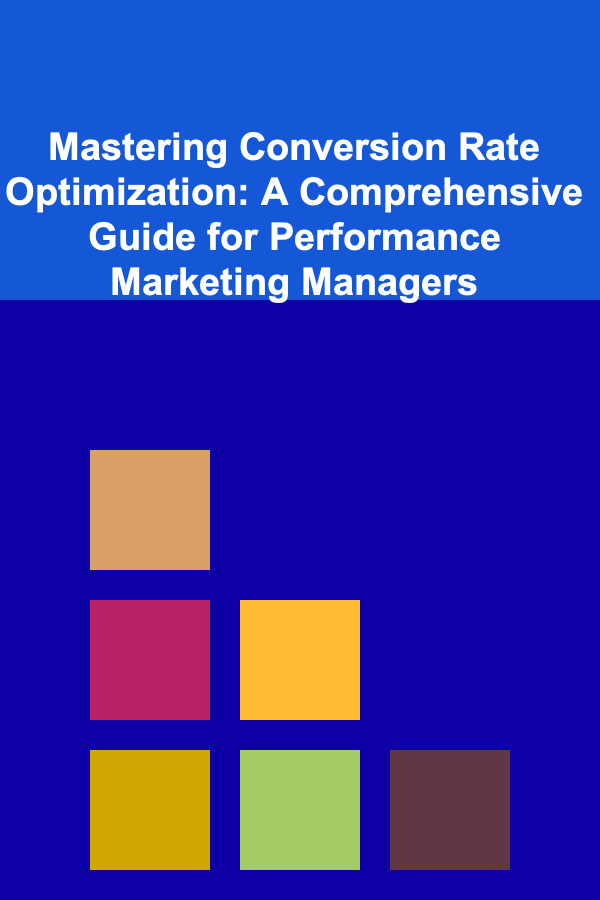
How to Brew Coffee in a French Press: Advanced Techniques
ebook include PDF & Audio bundle (Micro Guide)
$12.99$11.99
Limited Time Offer! Order within the next:

Coffee is more than just a drink---it's an art form. Brewing coffee to perfection involves a series of precise actions and choices that allow you to extract the full depth of flavors from the beans. Among the various methods of brewing coffee, the French Press stands out as one of the most beloved and versatile. Known for its robust and rich flavor profile, it offers a more hands-on experience compared to automatic coffee machines.
While the French Press is often associated with simplicity, there are advanced techniques and nuances that can elevate your brewing process, allowing you to fully experience the range of flavors your coffee beans have to offer. This article delves deep into the advanced techniques of brewing coffee in a French Press, covering everything from selecting the right coffee beans to mastering the grind size, water temperature, and brew time.
Understanding the French Press
The French Press, also known as a press pot or plunger pot, is a popular brewing method that works by steeping ground coffee in hot water, then separating the coffee grounds from the brewed coffee with a metal or nylon filter. This method extracts a more full-bodied, intense cup of coffee compared to drip brewing methods due to its contact with the coffee grounds throughout the brewing process.
The beauty of the French Press lies in its ability to extract oils and compounds from coffee grounds that are often left behind by paper filters. This results in a rich and flavorful cup with a fuller body. However, brewing with a French Press requires careful attention to detail and the right techniques to avoid over-extraction, under-extraction, or an undesirable taste.
Choosing the Right Coffee Beans
The foundation of any great cup of coffee begins with the coffee beans. The quality, origin, and roast level of your beans will dramatically impact the final taste. When brewing with a French Press, there are several considerations to keep in mind when selecting your beans.
The Importance of Freshness
Freshness is key to unlocking the full flavor potential of your coffee. Always use freshly roasted coffee beans, ideally within two weeks of roasting. The flavor of coffee starts to deteriorate after this period due to oxidation and the release of volatile compounds. If you want to elevate your brewing experience, buy beans in small quantities and use them as soon as possible to ensure you get the freshest cup.
Selecting the Right Roast Level
French Press brewing works particularly well with medium to dark roasts, which have a fuller flavor and richer body. Medium roast coffee offers a balance of sweetness and acidity, while dark roast coffees tend to be less acidic and offer bold, smoky flavors. Light roasts, while excellent for some brewing methods like pour-over, may not work as well in a French Press, as they tend to be more acidic and could result in a more fragile cup.
Consider experimenting with different types of beans. Single-origin coffees often showcase unique flavor profiles---ranging from fruity to earthy---while blends offer consistency and balance. Whether you prefer a classic Sumatra with earthy tones or a fruity Ethiopian coffee, choosing high-quality beans will set the stage for an extraordinary brew.
Grinding Your Coffee
The grind size plays a crucial role in the final cup of coffee. When brewing in a French Press, achieving the right grind is vital for optimal extraction. If the grind is too fine, it can lead to over-extraction, producing a bitter, muddy cup. If the grind is too coarse, under-extraction can occur, resulting in a weak, flavorless coffee.
Optimal Grind Size for French Press
For French Press brewing, the grind size should be coarse, resembling breadcrumbs or sea salt. A coarse grind allows the coffee grounds to steep in the water for a longer time without passing through the filter, which is key to achieving that full-bodied cup of coffee. A burr grinder is the best tool for achieving a consistent grind size, as it ensures uniformity, which is important for consistent extraction.
Tip: If you don't have a burr grinder, avoid using blade grinders. They produce uneven grounds that can lead to inconsistent extraction and an unevenly brewed cup.
Grind Fresh for the Best Results
For maximum flavor, always grind your beans right before brewing. Pre-ground coffee can lose its essential oils and freshness quickly, so grinding your coffee just before brewing ensures that you extract the fullest flavor.
Measuring Your Coffee and Water
While it may be tempting to eyeball the amount of coffee and water you use, precision is key to getting the perfect cup. The ratio of coffee to water can make or break your brew.
The Golden Ratio
The general guideline for brewing coffee with a French Press is a 1:15 ratio of coffee to water. This means for every gram of coffee, you'll use 15 grams of water. This ratio will give you a balanced cup with a good body and clarity. However, the ratio can be adjusted to your taste preferences:
- Stronger coffee: Use a 1:12 or 1:14 ratio.
- Weaker coffee: Use a 1:16 or 1:17 ratio.
Weighing Your Coffee and Water
For more accuracy, it's best to use a kitchen scale to measure your coffee and water. By weighing your coffee and water, you eliminate guesswork and ensure consistency every time. A digital scale with a 0.1-gram precision is ideal for this purpose.
Water Temperature
Water temperature is one of the most critical factors in the brewing process. If the water is too hot, it can extract undesirable bitter compounds from the coffee grounds. If it's too cold, the extraction will be incomplete, leaving you with a flat and underwhelming cup.
The Ideal Brewing Temperature
The ideal water temperature for brewing coffee in a French Press is between 195°F and 205°F (90°C to 96°C). This range is hot enough to extract the full range of flavors from the coffee without causing bitterness or over-extraction.
Tip: If you don't have a thermometer, bring water to a boil and let it sit for about 30 seconds to cool slightly before pouring it over the coffee grounds.
Preheating Your French Press
Before adding water to your French Press, preheat the carafe by pouring hot water into it and swishing it around. This step helps maintain the ideal brewing temperature and ensures that your coffee doesn't cool too quickly during the steeping process.
Brewing Time
The ideal brewing time for French Press coffee is typically between 4 and 6 minutes. However, the exact time can vary depending on the grind size, water temperature, and personal taste preferences.
The Brewing Process
- Add Coffee Grounds: After preheating your French Press, add the ground coffee to the pot.
- Add Water: Slowly pour the hot water over the coffee grounds, saturating them evenly. For an even extraction, pour in a circular motion from the center outwards.
- Stir: After adding the water, give the coffee a gentle stir to ensure all the grounds are fully saturated. This step helps ensure an even extraction.
- Let It Steep: Place the lid on the French Press, making sure the plunger is up. Let the coffee steep for about 4 to 6 minutes.
- Press: After the brewing time is up, slowly press the plunger down, applying consistent pressure. Do not press too quickly, as this can cause the coffee grounds to push through the filter, resulting in a gritty cup.
Experiment with Brewing Time
If you prefer a stronger coffee, you can extend the brewing time to 7 minutes, but be careful not to overdo it, as prolonged steeping can lead to over-extraction and bitterness.
Advanced Techniques and Tips for Fine-Tuning Your Brew
While the basics of French Press brewing are relatively straightforward, there are advanced techniques that can help you achieve a more refined and flavorful cup. Here are some tips to further enhance your brewing process:
Pre-wet Your Coffee Grounds (Blooming)
Incorporating the blooming technique into your brewing process helps release carbon dioxide from the coffee grounds, which can improve the extraction. To bloom, pour just enough hot water over the coffee grounds to wet them (about twice the weight of the coffee). Let it sit for 30 seconds, and then proceed with the rest of the brewing process. This step is particularly beneficial when using freshly roasted coffee beans.
Agitation During Brewing
Stirring the coffee halfway through the brewing process can help achieve a more even extraction. After the first 2 minutes of steeping, gently stir the coffee with a spoon or stirrer to ensure that all the grounds are evenly immersed in water. This technique is particularly useful for medium grind sizes.
Experimenting with Water Composition
The mineral content in water plays a significant role in the extraction of flavors. Using water with higher mineral content can result in better flavor extraction. If your tap water is hard or soft, consider using filtered or bottled water with balanced mineral content to improve your coffee's taste.
Conclusion
Brewing coffee in a French Press is an art that combines precision, patience, and a little experimentation. By focusing on the details---such as selecting the right beans, perfecting the grind, and adjusting the brewing time---you can elevate your French Press coffee to a whole new level of richness and complexity. Through consistent practice and an understanding of the factors that influence extraction, you can enjoy a coffee that's not only satisfying but also tailored to your personal taste.
Remember, coffee brewing is not just about following recipes; it's about adjusting and fine-tuning based on your preferences. Whether you're looking for a smoother, balanced cup or a bolder, more intense flavor, the French Press offers the versatility and depth to make it happen.
Reading More From Our Other Websites
- [Organization Tip 101] How to Use a Cloud Service for Storing and Organizing Photos
- [Polymer Clay Modeling Tip 101] Best Techniques for Integrating Metal Wire into Polymer Clay Jewelry Designs
- [Soap Making Tip 101] Eco-Friendly Soap Making: Sustainable Inspirations for Green Brands
- [Personal Care Tips 101] How to Use a Facial Cleanser to Maintain a Healthy Skin Barrier
- [Ziplining Tip 101] Why Ziplining Over a Waterfall Should Be on Every Adventurer's Bucket List
- [Organization Tip 101] How to Stage Each Room for Maximum Appeal
- [Organization Tip 101] Why Organizing Your Fitness Equipment Encourages Exercise
- [Home Space Saving 101] How to Utilize Under the Bed Storage for Small Spaces
- [Personal Care Tips 101] How to Make Blush Last Longer on Your Skin
- [Home Pet Care 101] How to Prepare Pet-Safe Holiday Foods: Ensuring a Feast for Your Four-Legged Family Member

How to Make a Checklist for Leveraging User-Generated Content in Your Social Media Strategy
Read More
How to Make Your Home Feel Larger with Strategic Lighting
Read More
Mastering Conversion Rate Optimization: A Comprehensive Guide for Performance Marketing Managers
Read More
How To Develop a Business Continuity Plan for Your Small Business
Read More
How to Negotiate Advertising Budgets Like an Executive
Read More
10 Tips for Interviewing Guests on Your Podcast
Read MoreOther Products

How to Make a Checklist for Leveraging User-Generated Content in Your Social Media Strategy
Read More
How to Make Your Home Feel Larger with Strategic Lighting
Read More
Mastering Conversion Rate Optimization: A Comprehensive Guide for Performance Marketing Managers
Read More
How To Develop a Business Continuity Plan for Your Small Business
Read More
How to Negotiate Advertising Budgets Like an Executive
Read More